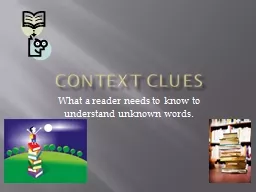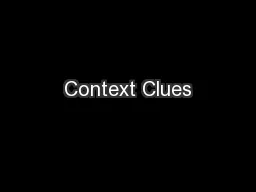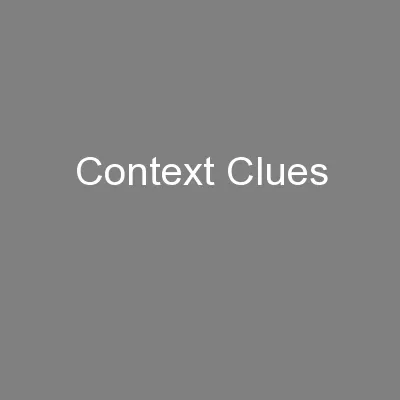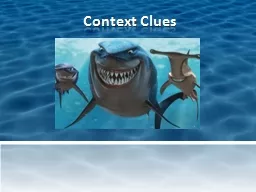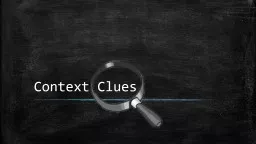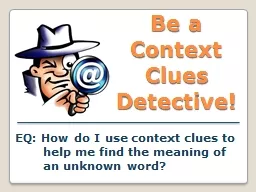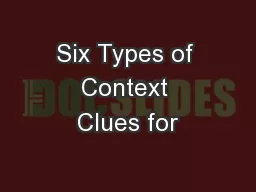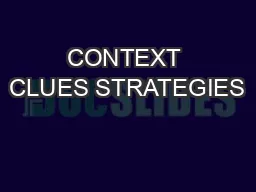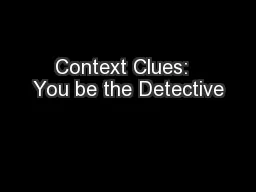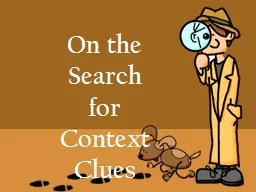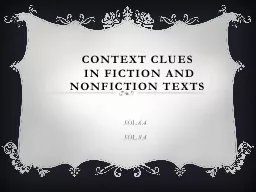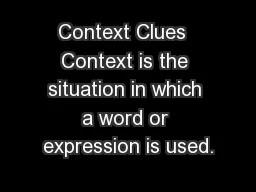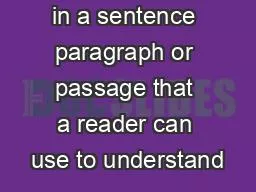PPT-Context Clues What a reader needs to know to understand unknown words.
Author : trish-goza | Published Date : 2018-10-20
What are context clues Context clues are bits of information from the text along with prior knowledge that allow the reader to decide the meaning of unknown words
Presentation Embed Code
Download Presentation
Download Presentation The PPT/PDF document "Context Clues What a reader needs to kno..." is the property of its rightful owner. Permission is granted to download and print the materials on this website for personal, non-commercial use only, and to display it on your personal computer provided you do not modify the materials and that you retain all copyright notices contained in the materials. By downloading content from our website, you accept the terms of this agreement.
Context Clues What a reader needs to know to understand unknown words.: Transcript
Download Rules Of Document
"Context Clues What a reader needs to know to understand unknown words."The content belongs to its owner. You may download and print it for personal use, without modification, and keep all copyright notices. By downloading, you agree to these terms.
Related Documents

